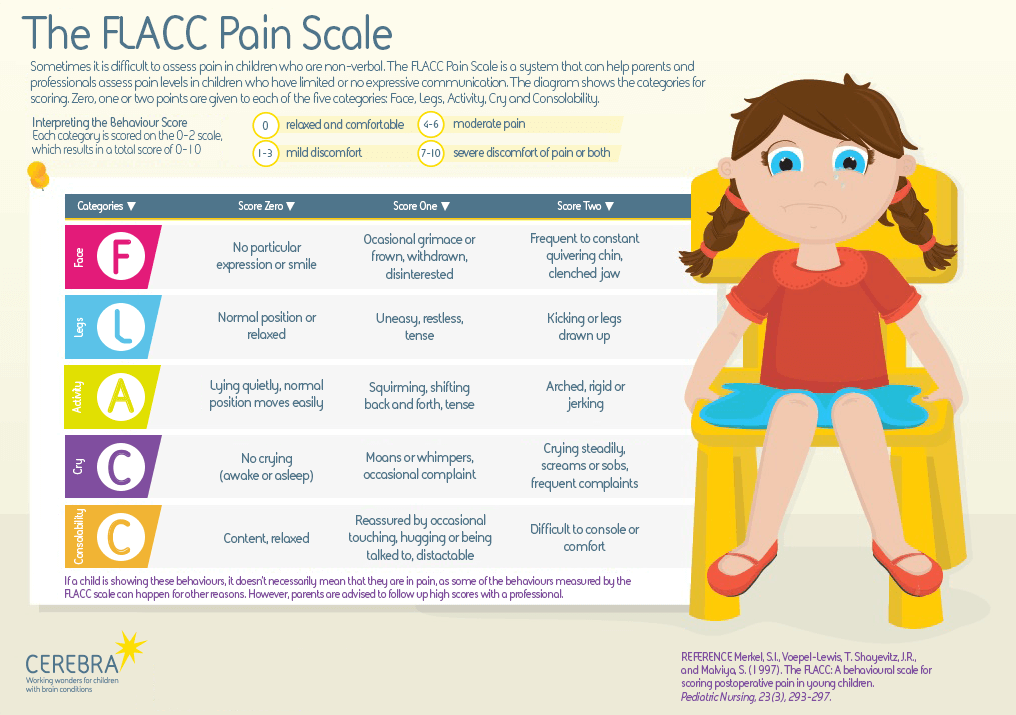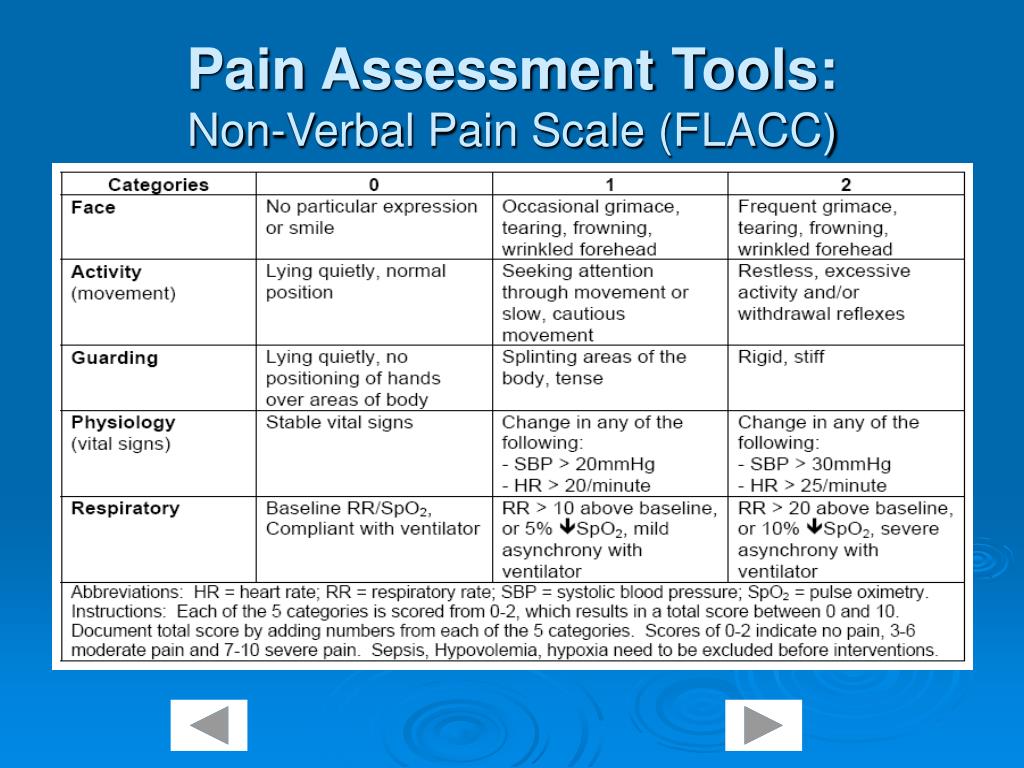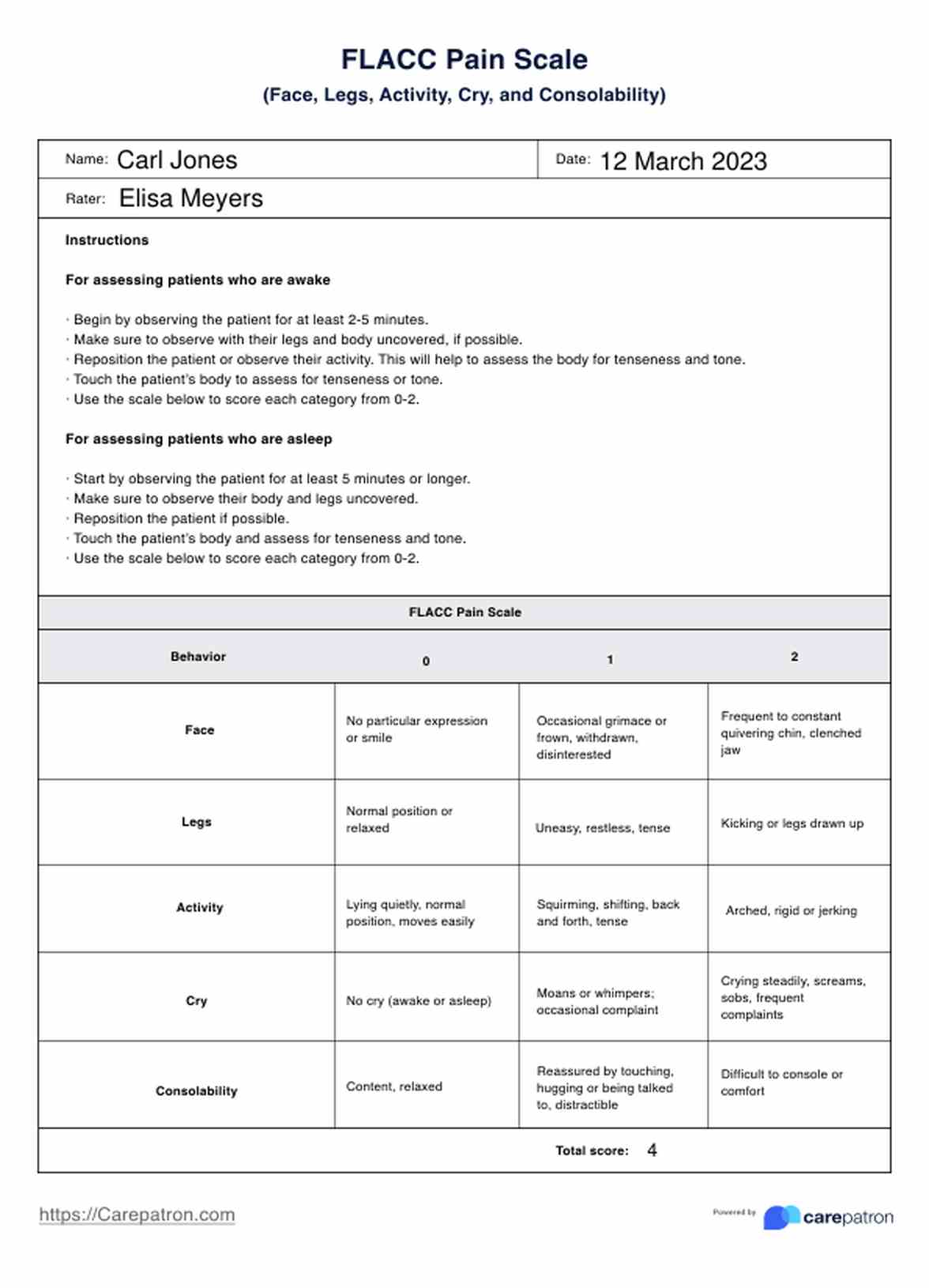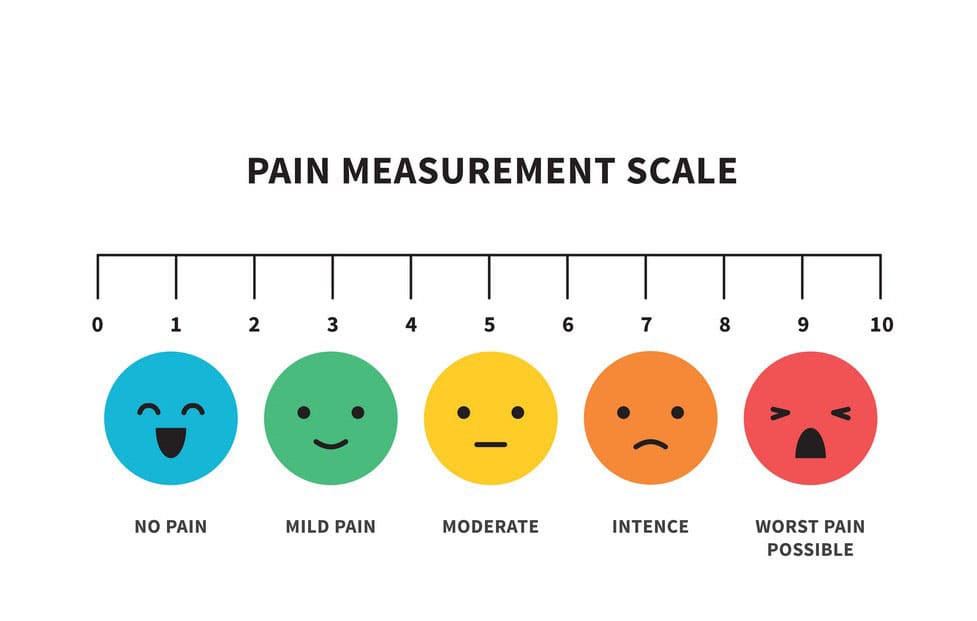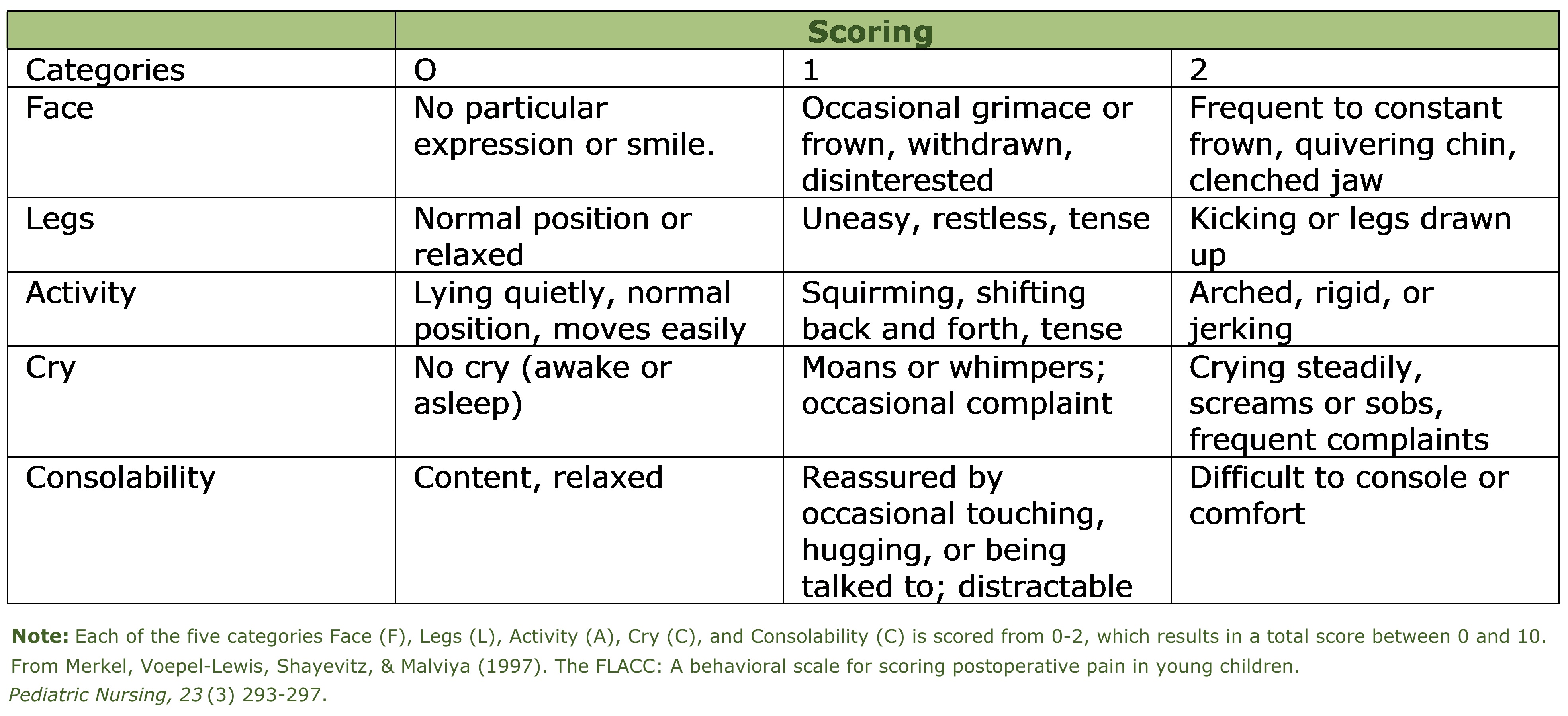Printable Flacc Pain Scale
Printable Flacc Pain Scale - View, download and print flacc behavioral pain assessment scale pdf template or form online. The face, legs, activity, cry, and consolability (flacc) tool was originally designed to assess pain in nonverbal (young) children, based on observations of behaviors (merkel et al., 1997). Reposition patient or observe activity, assess body for tenseness. The flacc pain scale is used to assess pain in children who cannot. Pain is assessed through observation of 5 categories. A behavioral scale for scoring postoperative pain in young children. Flacc behavioral pain scale patients who are awake: The flacc scale includes five sections (i.e., face, legs, activity, cry and consolability) of signs and behaviors which indicate distress. The diagram shows the categories. Add together to determine total pain score. The following table provides the criteria for the flacc behavioural pain scale. Observe legs and body uncovered. The diagram shows the categories. Reposition patient or observe activity;. How to use the flacc in patients who are awake: Consider pain medication intervention for score > 4 that does not respond to comfort measures. Pain is assessed through observation of 5 categories. The revised flacc observational pain tool: Observe for 1 to 5 minutes or longer. Observe legs and body uncovered. Reposition patient or observe activity;. The flacc scale includes five sections (i.e., face, legs, activity, cry and consolability) of signs and behaviors which indicate distress. Reposition patient or observe activity. Observe legs and body uncovered. 10 unsorted body pain charts are collected for any of your needs. 10 unsorted body pain charts are collected for any of your needs. Improved reliability and validity for pain assessment in children with cognitive impairment. Flacc behavioral pain scale patients who are awake: Reposition patient or observe activity, assess body for tenseness. Observe for 1 to 5 minutes or longer. Reposition patient or observe activity, assess body for tenseness. Improved reliability and validity for pain assessment in children with cognitive impairment. Several types of pain scales are in use for acute, chronic, and neuropathic pain. Reposition patient or observe activity;. The flacc pain scale is used to assess pain in children who cannot. How to use the flacc in patients who are awake: The flacc scale was developed by sandra merkel, ms, rn, terri. The diagram shows the categories. Several types of pain scales are in use for acute, chronic, and neuropathic pain. 10 unsorted body pain charts are collected for any of your needs. The diagram shows the categories. The flacc pain scale is a system that can help parents and professionals assess pain levels in children who have limited or no expressive communication. The flacc scale was developed by sandra merkel, ms, rn, terri. Observe legs and body uncovered. A behavioral scale for scoring postoperative pain in young children. Add together to determine total pain score. Observe legs and body uncovered. The revised flacc observational pain tool: The following table provides the criteria for the flacc behavioural pain scale. Reposition patient or observe activity, assess body for tenseness. The flacc scale includes five sections (i.e., face, legs, activity, cry and consolability) of signs and behaviors which indicate distress. The flacc scale was developed by sandra merkel, ms, rn, terri. Consider pain medication intervention for score > 4 that does not respond to comfort measures. Add together to determine total pain score. Reposition patient or observe activity;. The revised flacc observational pain tool: Improved reliability and validity for pain assessment in children with cognitive impairment. Flacc behavioral pain scale patients who are awake: How to use the flacc in patients who are awake: Reposition patient or observe activity. Pain is assessed through observation of 5 categories. The flacc scale was developed by sandra merkel, ms, rn, terri. The face, legs, activity, cry, and consolability (flacc) scale evaluates postoperative pain in young children. Observe legs and body uncovered. The following table provides the criteria for the flacc behavioural pain scale. Rate patient in each of the five measurement categories. Observe legs and body uncovered. Consider pain medication intervention for score > 4 that does not respond to comfort measures. Observe for 1 to 5 minutes or longer. Several types of pain scales are in use for acute, chronic, and neuropathic pain. Observe legs and body uncovered. Flacc behavioral pain scale patients who are awake: How to use the flacc in patients who are awake: The face, legs, activity, cry, and consolability (flacc) scale evaluates postoperative pain in young children. The following table provides the criteria for the flacc behavioural pain scale. The flacc pain scale is used to assess pain in children who cannot. Observe legs and body uncovered. The face, legs, activity, cry, and consolability (flacc) tool was originally designed to assess pain in nonverbal (young) children, based on observations of behaviors (merkel et al., 1997). The flacc scale includes five sections (i.e., face, legs, activity, cry and consolability) of signs and behaviors which indicate distress. The diagram shows the categories. The flacc scale was developed by sandra merkel, ms, rn, terri.FLACC Pain Scale Chart Printable
FLACC Pain Assessment Scale 1.pdf Emotions SelfImprovement
Printable Flacc Pain Scale
FLACC Pain Scale Infographic Cerebra
Flacc Pain Scale Printable
FLACC Pain Scale Chart Printable
FLACC Pain Scale & Example Free PDF Download
Printable Flacc Pain Scale
Flacc Pain Scale Chart Printable
10 Unsorted Body Pain Charts Are Collected For Any Of Your Needs.
Whether Your Pain Comes On Suddenly (Acute), Persists For Several Months (Chronic), Or Is.
A Behavioral Scale For Scoring Postoperative Pain In Young Children.
View, Download And Print Flacc Behavioral Pain Assessment Scale Pdf Template Or Form Online.
Related Post:



